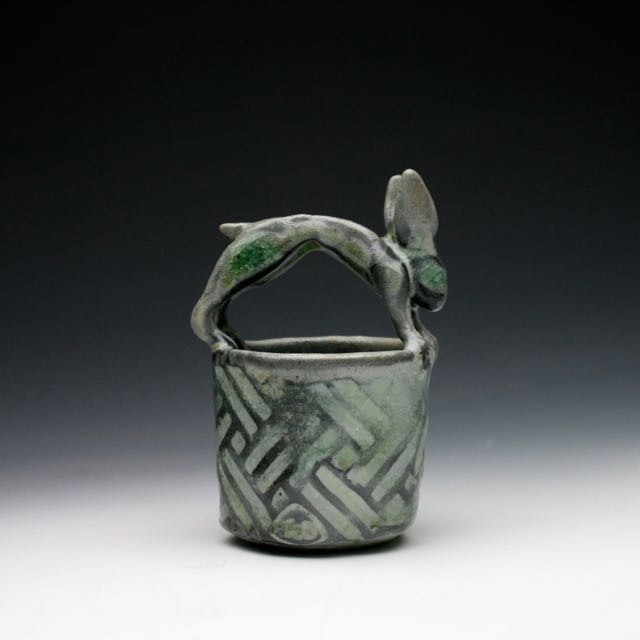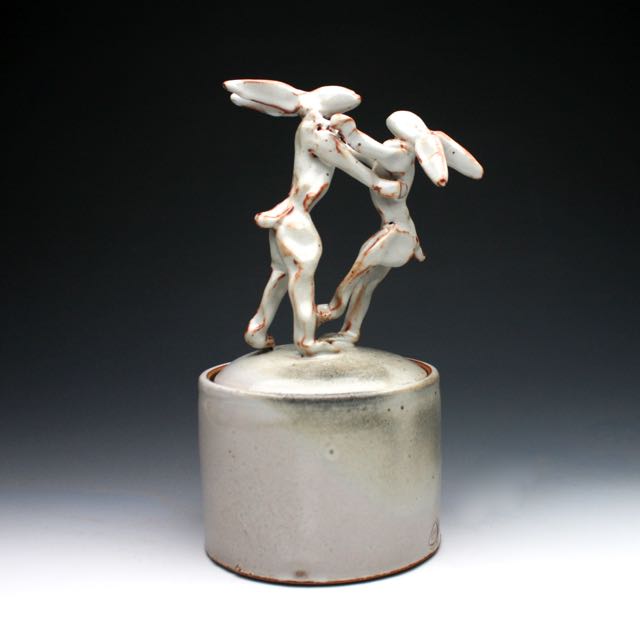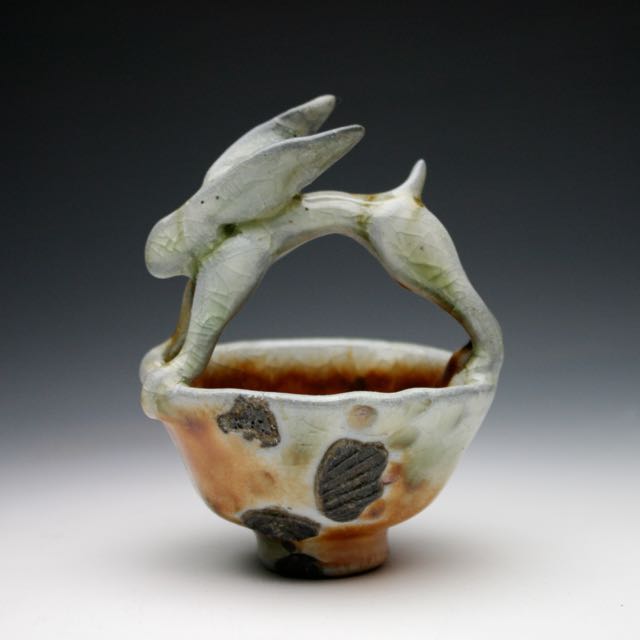MAKERS GALLERY
BLOG
Troy Bungart’s Rabbits
We at MAKERS GALLERY wish you a safe and joyful Easter.
This Easter-time, we encourage you to dust off special pieces in your home, reach out to those around you and have memorable, yummy meals in the company of people who lift your spirits.
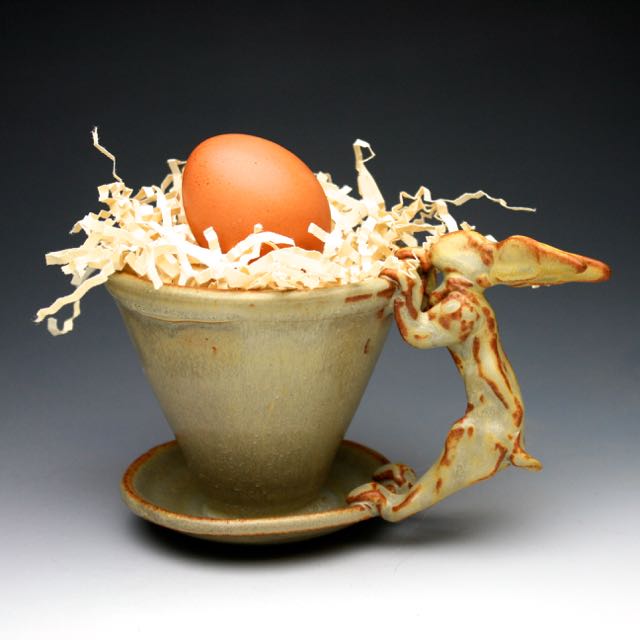
In this busy time, we hope you’ll find a moment to read our interview with the incredibly talented and insightful Troy Bungart. Troy lives in the United States, so there’s no mention of Easter Bilbies in this Easter interview. Instead, we have a captivating group of rabbits.
We’re so excited to bring you this special interview. It’s our first international artist interview of the year.
This interview is best paired with a moment of quiet, your favourite mug and drink, a comfy chair and a special bowl full of your favourite chocolates.
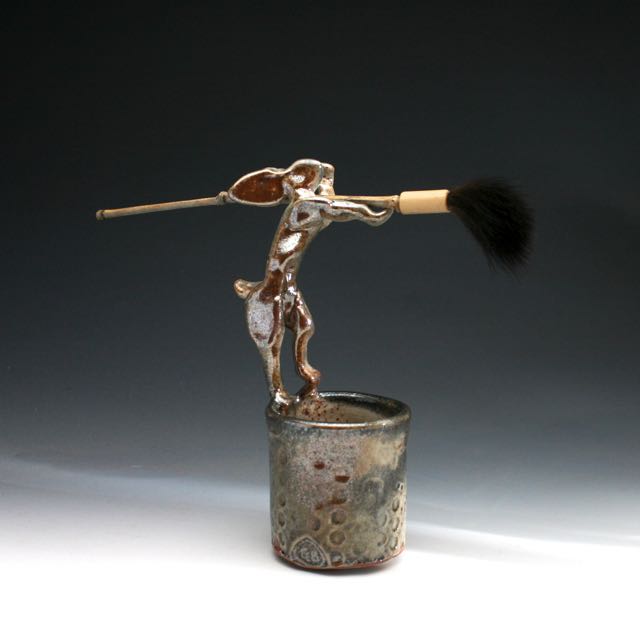 Rabbits have a natural, almost childlike appeal. I like to keep them pure―not saintly but emotionally real. There are some animals I do with obvious humour, but I don’t like to let my rabbits get cutesy.
Most importantly, from an artistic standpoint, rabbits remain recognisable when abstracted and they anthropomorphise well.
There’s incredible personality in each of the bunnies. How do you create this?
Rabbits are naturally lithe and active animals. They stretch and bunch, stand and sit, perk up and hunker down. They even sometimes fight or box or dance on their hind legs. Their flexibility allows me to credibly represent them in animal poses that are suggestive of human interaction.
Rabbits have a natural, almost childlike appeal. I like to keep them pure―not saintly but emotionally real. There are some animals I do with obvious humour, but I don’t like to let my rabbits get cutesy.
Most importantly, from an artistic standpoint, rabbits remain recognisable when abstracted and they anthropomorphise well.
There’s incredible personality in each of the bunnies. How do you create this?
Rabbits are naturally lithe and active animals. They stretch and bunch, stand and sit, perk up and hunker down. They even sometimes fight or box or dance on their hind legs. Their flexibility allows me to credibly represent them in animal poses that are suggestive of human interaction.
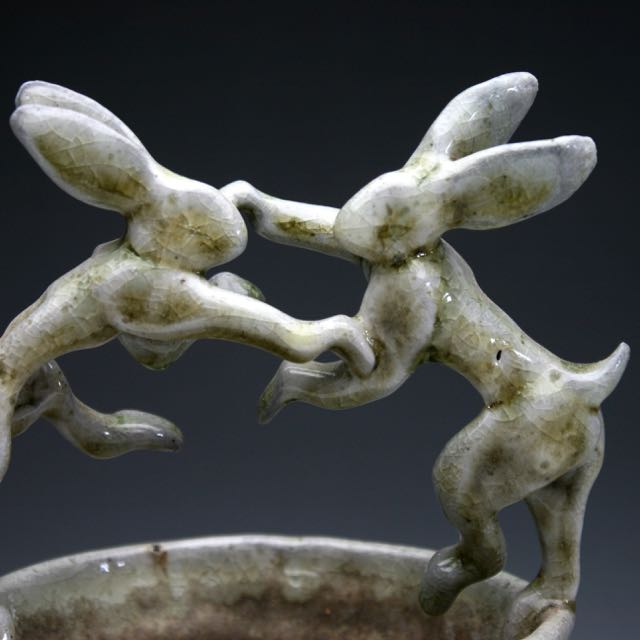
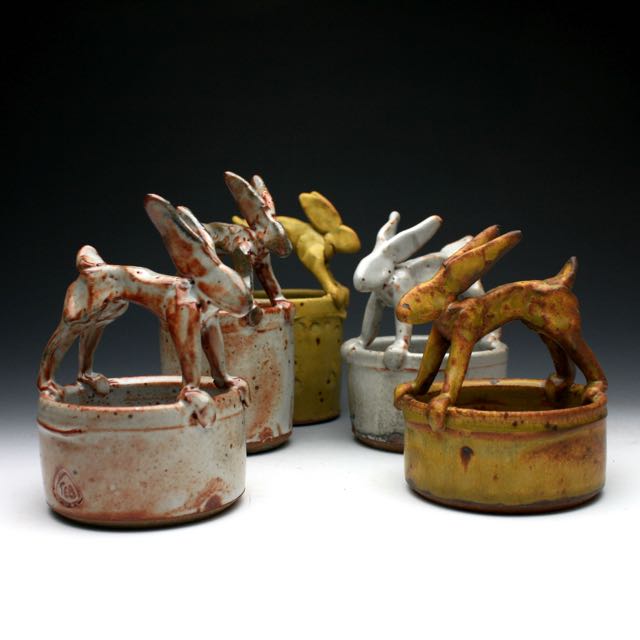
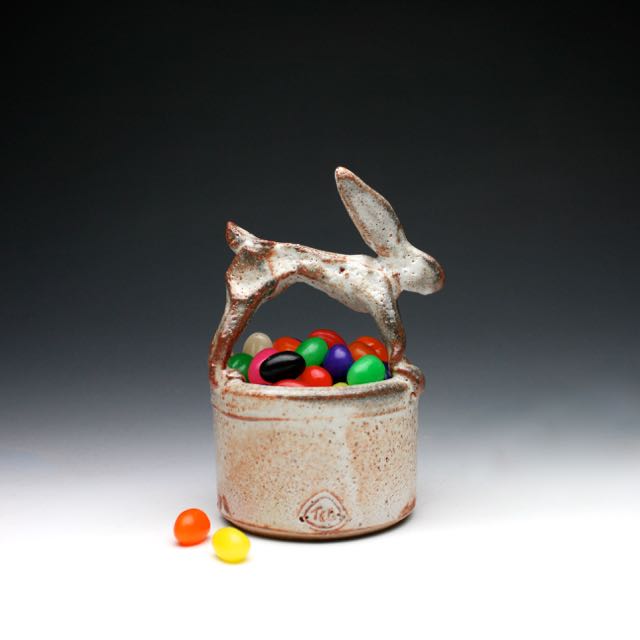
Do you have an interest in showing in Australia?
Absolutely. I had my work shown in a mixed Australian/US show in Portland several years ago. Australian ceramics are exciting: a somewhat different aesthetic―materials from different mines, people with different approaches, but all celebrating what can be done in the wide world of ceramics. Thousands of years of pottery and we still have only scratched the surface of what can be expressed with clay. I work at Schaller Gallery and appreciate being able to experience the perspective that comes from showing international work. If I had such an invitation from within Australia I would consider it an honour to have my work shown Down Under.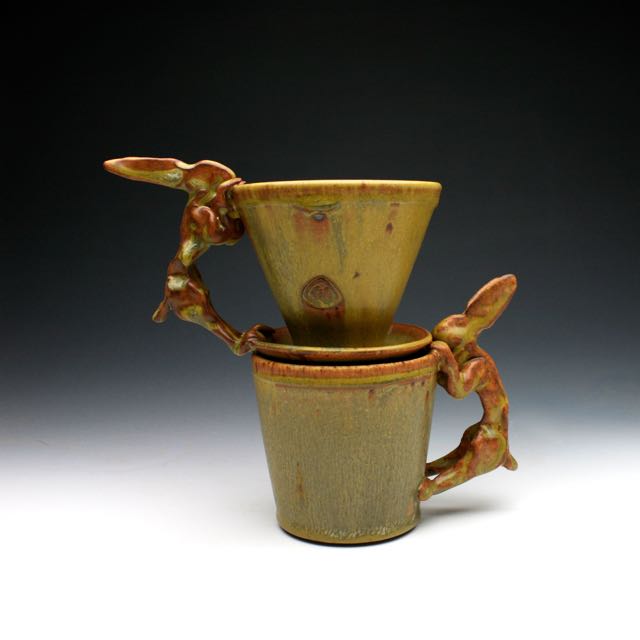 You’ve caught me with this question because I am currently in one of my phases where I am working on a continuum. It’s been a while since I blended handbuilding and sculpting with wheelwork and I feel as if my rabbit vessels are only the start of my next great adventure. I think the bunnies are so active because I am in an active phase. I’m combining things I have previously chased down and consequently feel familiar with. I suppose that’s the confidence you detect. But the elements are now speaking to me of directions I haven’t yet explored. That’s the bunny dynamic. My wife wants to get me painting on my pots again, so I will probably figure a fresh way to do so. I used to paint a lot of bunnies on vessels, so the rabbits I’m currently making may be a way to come up with a new perspective I can translate to imagery further down the road.
You’ve caught me with this question because I am currently in one of my phases where I am working on a continuum. It’s been a while since I blended handbuilding and sculpting with wheelwork and I feel as if my rabbit vessels are only the start of my next great adventure. I think the bunnies are so active because I am in an active phase. I’m combining things I have previously chased down and consequently feel familiar with. I suppose that’s the confidence you detect. But the elements are now speaking to me of directions I haven’t yet explored. That’s the bunny dynamic. My wife wants to get me painting on my pots again, so I will probably figure a fresh way to do so. I used to paint a lot of bunnies on vessels, so the rabbits I’m currently making may be a way to come up with a new perspective I can translate to imagery further down the road.
